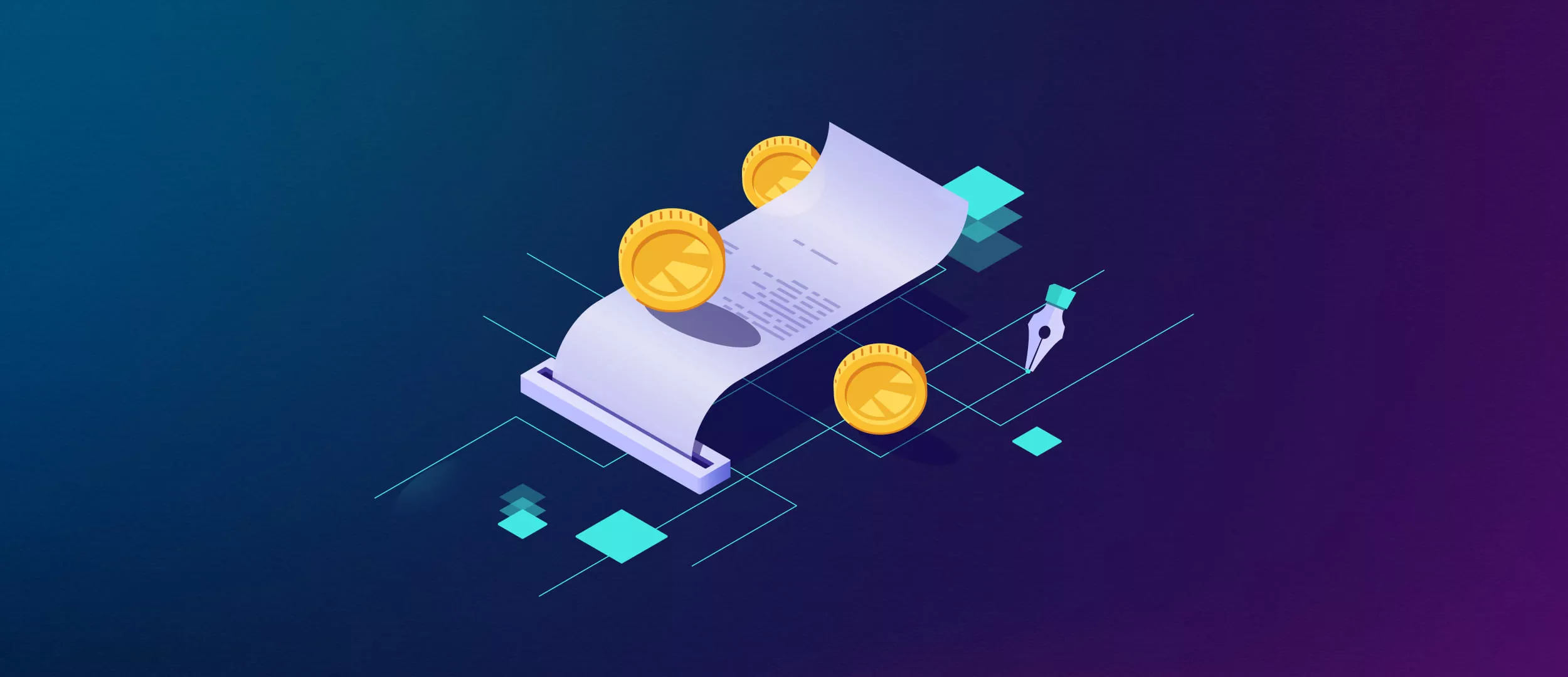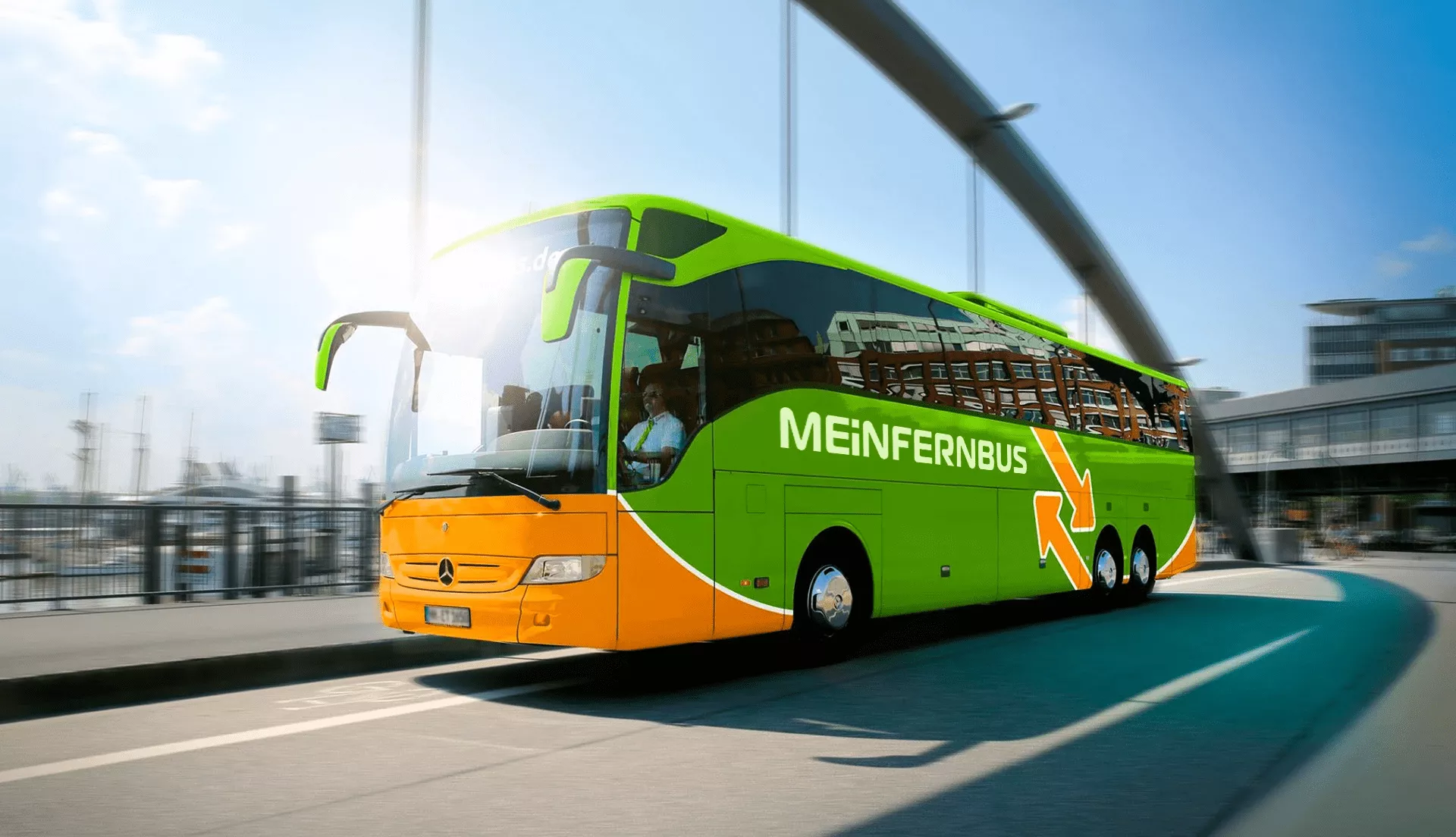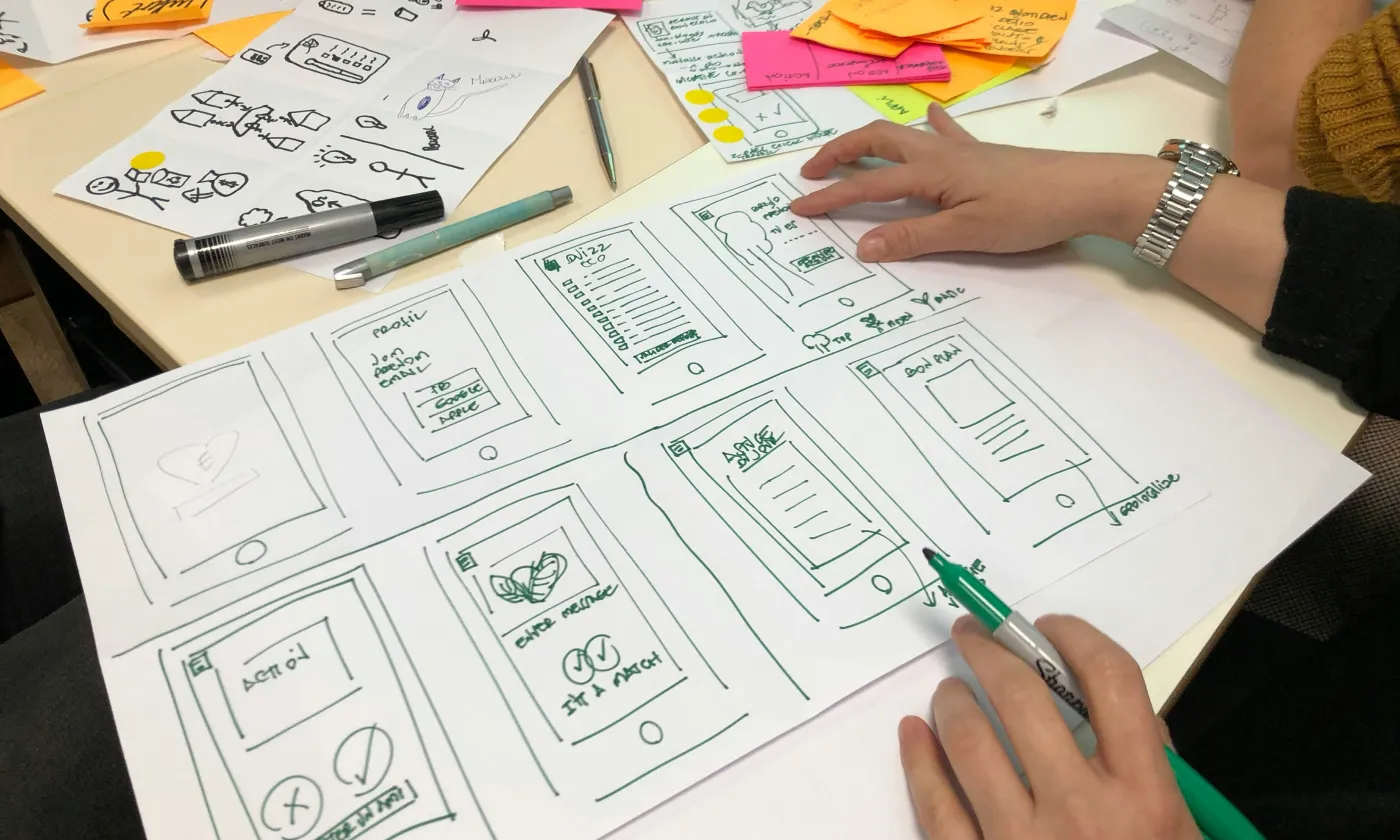
Attractive digital product design with consistent branding across all devices increases brand loyalty by 60%. Mobile applications that pay more attention to proportion when designing have higher active user retention. It is important to keep in mind that designing the product is an investment in the success of the product.
In this blog post, we will explore how much does it cost to design a product, which will help to allocate budget and resources wisely.
Stfalcon has expertise in designing outstanding software products for more than 15 years. We'll be a reliable partner when creating your application. Contact us to make detailed proposals describing the project's scope and costs to align with your vision.
How Much Does Product Design Cost for Startups
The product design cost for startups can vary widely depending on various factors such as the complexity of the product, the experience and location of the development team, and the scope of the project.
In general, product design costs can be broken down into several components, including research, concept development, prototyping, testing, and final design. Each of these components can have a different cost, and the total cost of the product design will depend on the time and resources required for each step.
For startups, the cost of designing a new product can be a significant investment, but it's important to remember that investing in good design can help attract customers, increase the perceived value of the product, and ultimately drive sales. Startups can choose to work with freelance designers or design agencies, and the cost will vary depending on the experience and location of the team.
Want a web app that does more?
Let's build a solution that's smart, sleek, and powerful.
Alina
Client Manager

The cost of product design can range from a few thousand dollars to tens of thousands of dollars or more, depending on the complexity of the product and the scope of the project. It's important for startups to do their research and carefully consider their budget when planning for product design.
Stages of the Product Design Process that Affect the Cost
Product design costs typically include four stages in the design of products and services: analysis, UX design, UI design, and usability testing. These stages are important for creating a user-centered product that meets the needs and expectations of its target audience. The analysis involves understanding user needs and business requirements, while UX design focuses on creating a user-friendly experience. UI design is about designing the visual interface, and usability testing is about evaluating and improving the product's usability.
Analysis
The analysis stage of the design of a product process typically involves collecting and examining information about the needs and desires of the target market, as well as the technical and financial feasibility of the product. This stage may include tasks such as market research, user research, competitive analysis, defining product requirements, and creating a feasibility study. The goal of the analysis stage is to gain a clear understanding of the product's potential viability and ensure that it aligns with the company's goals and values.
UX design
UX design is an important stage in product design that focuses on creating a positive user experience. It involves researching and understanding the needs of users, designing and prototyping solutions, and testing and iterating on those solutions to ensure they meet the needs of the user. The ultimate goal of UX design is to create products that are easy to use, intuitive, and enjoyable for the end user.
UI design
UI is a crucial stage in the development process of software or applications. It includes designing the user interface of the product, which includes visual elements, layout, and interactions. The goal is to create an intuitive and appealing interface that allows users to easily and efficiently interact with the product. This stage often involves collaboration between designers, developers, and stakeholders to ensure that the design meets both user needs and business objectives. Once the UI design is complete, it serves as a blueprint for developers to build the product.
Usability testing
Usability testing is an important step in the product design process that involves evaluating a product or prototype with real users to identify and resolve usability issues. It helps ensure that the product is intuitive and easy to use, and meets the needs and expectations of its intended audience. Usability testing can be conducted at various stages of the product design process, from initial concept development to final product launch, and can involve a range of methods, such as user interviews, observation, surveys, and task performance assessments. The insights gained from usability testing can inform design decisions, leading to a more successful and user-friendly product.
Why do you Need a Product Design Team?
A product design team turns ideas into well-structured, user-focused products. And it will fit your business objectives. They amalgamate skills that include research, UX design, and visual design. Every aspect of the product will meet the needs of both users and the market.
It's a team that will solve the problems within the guidelines by doing extensive user research and prototyping. Also, testing solutions for refining functionality and usability. The team fills the communication gap between developers, marketers, and stakeholders. This ensures smooth collaboration and creates functional and appealing products.
The product design team enforces competitive business. They introduce effective solutions and embrace trends. Its expertise will ensure that your product meets current users' expectations. It may have great perspectives for further adaptation and changes for future needs. That is crucial for long-term business success.
Product Design Cost Estimates
Product design price can vary greatly depending on factors. Generally, services can range from hundreds to several thousand dollars. It's best to consult a design firm or freelancer to get a specific quote for your project.
How Much Does it Cost to Design a Product in Eastern Europe
The cost of design in Eastern Europe can vary depending on the specific country and the project's complexity. However, Eastern European services are more affordable than Western Europe or the United States. Hourly rates can range from $30 to $100, depending on the country and the designer's experience. Development services in Eastern Europe are affordable and with high-quality execution. For example, Stfalcon's hourly rates for design services range from $30 to $40.
Design Cost Estimation in Latin America
The cost of designing a new product in Latin America can vary depending on the design's complexity and expertise. Also, the country where the design services are being provided. Design services in Latin America are generally less expensive, with hourly rates ranging from $20 to $100.
Design Cost Estimation in Asia
Asian countries are popular in outsourcing globally, and their designers are known for producing low-cost products. The design cost estimation in Asia depends on complexity, the specific country in Asia, and the expertise and experience of the team. Hourly prices in the Asian tech centers will differ from $10 to $15 for a junior designer and $20-30 for a senior designer.
Key Points That Affect The Price
The price of product design can be affected by various factors, including project size, the complexity of the project, product logic, and custom features. technical features, and a number of them.
Project size
The size of the project is one of the key factors that affect the price of a product. The larger the project, the more resources it will require, including development time, human resources, and infrastructure. As a result, the cost of the project will be higher.
The complexity of the project
The complexity of the project also affects the price of the product. A more complex project will require more resources and expertise to develop, test, and maintain. This could include factors such as the number of integrations required, the number of users that the product needs to support, and the amount of data the product needs to handle.
The complexity of the product logic. Custom features
The complexity of a product's logic is a crucial factor that affects design price. This refers to how intricate and sophisticated the product's architecture and functionality are. The more complex a product's logic, the more time and effort it will require to design, test and implement. This, in turn, can lead to higher design costs. Complexity can arise from various factors such as the number of interconnected components, the level of customization required, and the type of data processing required.
Custom Features:
Another significant factor that affects the price of product design is the level of customization required. Custom features are unique functionalities that are specific to a particular product or business. These features are typically designed to meet the specific needs of a target audience and require more time and effort to develop than standard features. As a result, the inclusion of custom features can increase the design cost significantly. This is especially true for products that require highly specialized features, such as enterprise software or medical equipment.
Technical features
The technical features of a product refer to the underlying technology and infrastructure that it is built on. These features include things like programming languages, frameworks, APIs, databases, and other technical specifications. The level of technical complexity required to develop these features can have a significant impact on the product design cost. For example, building a product with advanced machine learning capabilities will require more time and expertise than building a product without those capabilities.
The number of features you want to add to your product
The number of features included in a product can also affect its design price. More features typically mean more design work, testing, and implementation time, which can increase the overall cost of product design. However, the number of features alone is not always the determining factor for design cost. The complexity of the features and how they interact with each other and with the product's overall logic are also important factors to consider. In some cases, reducing the number of features can increase the design cost if it means sacrificing critical functionalities or compromising the product's usability.
Design Cost Example
We worked with the CTO of IT-MeinFernFernbus Alexey Kolupaev, on developing their web platform and app for Android and iOS for three years. When expanding the external representation of their brand, we managed to enhance the UX on their sales website. We worked on simplifying critical features like ticket search and purchase or input of passenger data.
One of our significant contributions was visualizing the company's first bus route between Freiburg and Munich. While MeinFernbus was developing its network adding new routes and lines, we updated and optimized the route map. Taking iconic metro maps from London and New York for inspiration, we adapted the design of essential geotagging for bus routes.
This made the map less symmetrical but ensured its practical use. The map underwent three significant redesigns to accommodate growth and be more usable.
Our competitor research service provides design from concept to stand-out, beginning at $1500. A design audit thoroughly reviews your product's usability and UX. We delivering actionable recommendations for the improvement of the interface, starting at $1500. On design analysis, we provide ideation workshops that meld client expectations. Align with trends and usability principles to craft user-focused interfaces, starting from $1500. Prototyping transforms ideas into visual, interactive forms, covering key user scenarios from $2500. Usability testing ensures your app is easy for users to engage with and functions right, starting at $1500.
Model of Cooperation
In the context of project management or contracting, there are typically two common models of cooperation: fixed price, and time and material (T&M).
fixed price
The fixed price model is when a project is priced at a fixed amount and the contractor assumes the risk of any cost overruns or delays. This model is often used when the scope of work is well defined and there is a high degree of certainty about the time and resources required to complete the project.
time & material (T&M) mode
In contrast, the time and material (T&M) model involves the contractor billing the client for the actual time spent working on the project plus the cost of any materials or other expenses. This model is often used when the scope of work is less well-defined, or when there is a high degree of uncertainty about the time and resources required to complete the project.
Under the T&M model, the client assumes more risk for any cost overruns or delays because the project cost is not fixed in advance. However, this model can also provide greater flexibility to accommodate changes in the scope of work or other unforeseen circumstances.
In some cases, a hybrid approach can be used that combines elements of both the fixed price and T&M models. For example, a project may be priced at a fixed amount with a cap on the number of hours that can be billed, providing some degree of cost certainty while still allowing for some flexibility.
Why you Should Consider a Product Design Company for your Project
There are several reasons why you should consider a product design company for your project:
- Expertise: A product design company will have a team of experienced professionals who specialize in various aspects of product design, such as user research, industrial design, mechanical engineering, prototyping, and manufacturing. These experts can offer valuable insights and recommendations to ensure that your product is well-designed, functional, and manufacturable.
- Cost-effective: Hiring a company can save you money in the long run. By using their expertise to help you avoid costly mistakes and ensure that your product is designed for efficient manufacturing, you can avoid costly redesigns and delays that can eat into your budget.
- Faster time-to-market: A product design company can help you speed up your product development timeline by offering rapid prototyping, testing, and manufacturing services. By working with a design team that has experience in all aspects of the product development process, you can streamline your workflow and get your product to market faster.
- Access to resources: Product design companies often have access to the latest design tools and technologies, as well as a network of suppliers and manufacturers. This means that they can help you source materials, manufacture your product, and even assist with packaging and shipping.
- Customized solutions: A company can work with you to create a customized solution that meets your specific needs and requirements. They can help you identify user needs, design features that align with your brand and create a product that stands out in a crowded market.
Overall, working with a product design company can be a smart investment for any project that requires expert design and development expertise. By leveraging their skills and resources, you can create a high-quality, well-designed product that meets your business goals and exceeds your customers' expectations.
How Stfalcon can help you
Stfalcon is a product design and development company that specializes in creating custom software solutions for businesses. We help clients to design digital products that meet their business goals and user needs. We use research, user testing, and other design methodologies to create intuitive and user-friendly interfaces. Our expertise lies in the following areas:
- Web and mobile app development: Stfalcon has experience in building web and mobile applications for a range of industries. We use modern technologies and frameworks to develop apps that are scalable, secure, and performant.
- E-commerce solutions: Stfalcon helps businesses to create online stores and marketplaces that are easy to use and manage. We provide custom e-commerce solutions that include payment gateway integration, product management, and shipping management.
- Blockchain development: Stfalcon has expertise in developing blockchain solutions for various industries. We have experience in creating decentralized applications (dApps), smart contracts, and other blockchain-based solutions.
- UI/UX design: Stfalcon has a team of experienced UI/UX designers who create visually appealing and intuitive interfaces for digital products. We use design thinking and user-centered design principles to ensure that our designs meet the needs of the target audience.
Overall, Stfalcon's expertise lies in designing and developing custom software solutions for businesses across various industries. We use modern technologies and design methodologies to create solutions that are user-friendly, scalable, and secure.
STRONGMom is a fitness application for before, after, and during pregnancy. The clients came to us with a ready product, yet they were not happy with the admin panel and reports from users of the platform failures. After an audit of the project and its estimate, we rebuilt the project anew, using a new design and more modern technologies.
TaskRunner is an online platform for ordering services for posters and executants. All system components were redesigned from scratch. The product's operational stability and the speed and convenience of using the app and Admin Panel improved. More importantly, the users were preserved during the app redesign process.
Bottom Line
The cost of product design can vary depending on various factors, such as the product's complexity and the project's scope. It's important to remember that each project is unique, and the costs can vary significantly.
At Stfalcon, we are experts in designing and developing software products. Our extensive expertise makes us your trusted vendor for creating an app. We can provide you with a detailed proposal that outlines the scope of work, timeline, and costs associated with the project. Contact us, and we will provide a full estimate of the cost of a product design.
FAQs
How much does it cost to design a digital product like an app or software?
In Eastern Europe, design services are affordable and of high quality. The prices vary from $30 to $100 per hour, depending on the difficulty level and the designer's expertise. For example, Stfalcon charges between $30 and $40 per hour. Latin America also allows to calculate a cost-effective solution. Depending on the project's difficulty and the designer's expertise, hourly rates usually range from $20 to $100. Outsourcing to Asia is in demand because of its low-cost services, although the quality may vary. The hourly rates range from $10–$15 for junior designers and $20–$30 for senior experts.
How long does the IT product design process take?
Designing an IT product can take weeks to months. It depends on the project's complexity and scope. We provide the research, competitor analysis, and user interviews as part of our discovery phase services for product development. The development of the concept defines the user personas. We map out the user journeys and create wireframes that establish the new product structure. The UI/UX design will concern very detailed prototypes, branding elements, and user interfaces. It ensures fluidity and good aesthetic appeal. Basic projects might take 4–8 weeks; more complex ones may take 12–24 weeks or more.

 Read the full case study
Read the full case study
 Read the full case study
Read the full case study
 Read the full case study
Read the full case study



